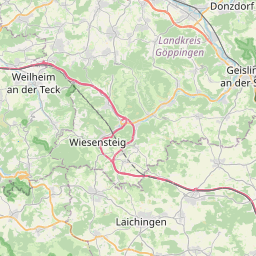






Description: Das Projekt "FP4-NNE-JOULE C, Application of advanced chemistry and CFD to pollutant reduction in diesel engines" wird/wurde gefördert durch: Kommission der Europäischen Gemeinschaften Brüssel. Es wird/wurde ausgeführt durch: Mercedes-Benz Group AG.General Information/Objectives: The objective of this research project is to solve the pressing NO and particulate matter (PM) emission problem of Diesel engines in trucks by applying the most recent advances in modelling of detailed chemistry and fluid dynamics as well as laser diagnostics to practical Diesel combustion. This will be achieved by validating appropriate sub models for generation and depletion of the pollutants NO and PM and integrating them into an established multidimensional engine code. This dedicated code will be used to investigate numerically and experimentally the potential for simultaneous reduction of NOx and particulates in DI engines until the entrance point of possible exhaust after treatment system. Technical Approach The pollutant production of diffusion flames in Diesel engines is controlled to a large extent by turbulence. Therefore, the adverse effect of a temperature decrease may be compensated by an appropriate increase in turbulence level to maintain optimum combustion rates. Hence, it should be possible to lower the NO and PM levels while maintaining the extraordinary fuel consumption advantages of the Diesel engine. There is a window from 1800 K down to a charge temperature of around 1400 K where combustion with low final NOx and soot levels appears feasible. Therefore, a dedicated pragmatic code will be compiled from existing knowledge - taking advantage of simplifications whenever possible without losing the required chemical and physical relevance - and applied to real practical problems in a joint experimental and numerical approach of experts in their fields. The key issues worked upon in the project are: 1. set-up of a predictive 3D Diesel combustion code with a realistic, complex chemistry (ILDM) for NO (prompt, thermal, fuel) and a phenomenological soot burn-out for real engine geometries by adapting, upgrading and validating available sub models; 2. combining numerical and experimental engine studies for identifying strategies to implement dedicated turbulent engine flow fields to tailor the late phase of Diesel combustion for reduced temperatures but strongly enhanced turbulence. This will provide simultaneously low NO and low soot levels without fuel penalties; (3. verifying the available sub models for spray formation and mixing by applying advanced laser diagnostics to ensure accurate simulation results for modern production type Diesel engines; (4. validating the diesel combustion code predictions and extract the still unused potential for pollutant reduction by real engine data from an optically accessible Diesel engine for realistic geometries and operating conditions. Expected Achievements and Exploitation ... Prime Contractor: Daimler Benz AG, Forschungsinstitut Mercedes Benz; Stuttgart; Germany.
SupportProgram
Origins: /Bund/UBA/UFORDAT
Tags: Dieselkraftstoff ? Brennstoff ? Dieselmotor ? Kraftstoffverbrauch ? Laser ? Strömungstechnik ? Brennstoffverbrauch ? Lastkraftfahrzeug ? Stickoxide ? Verbrennung ? Chemikalien ? Daten ? Emissionsminderung ? Reaktionstemperatur ? Simulation ? Studie ? Modellierung ? Forschungsprojekt ? Diffusion ? Partikel ? Schadstoffminderung ? Turbulenz ?
Region: Baden-Württemberg
Bounding boxes: 9° .. 9° x 48.5° .. 48.5°
License: cc-by-nc-nd/4.0
Language: Englisch/English
Time ranges: 1996-03-01 - 1999-08-31
Accessed 1 times.